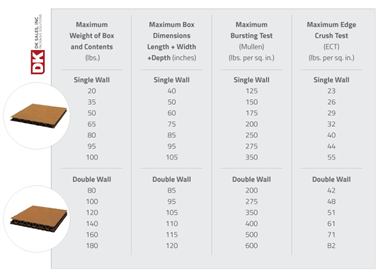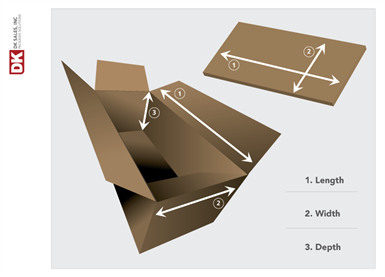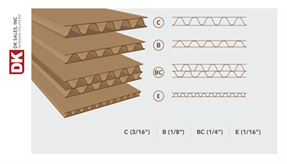Mullen and ECT
These terms relate to how cartons are rated for strength. Mullen refers to a rating based on bursting strength whereas ECT refers to an edge crush test.
While they have their technical differences, at the end of the day, they are a means to an end. Our customers can take comfort in knowing we will consider variables such as printability and stacking strength to determine which board is right for their application.

Measurement
The dimensions of a box are always referred to in order of length, width and depth. A simple way to remember which is which is that length is the longest of the two dimensions at the opening. For a flat sheet, dimensions are expressed in order of width and length, where width refers to the direction of the corrugation.

Flute
Flutes refer to the arched structure between the liner boards. E, B, and C flutes are most common.
Different combinations of flutes and paper weights mean customers have many choices to obtain the optimal mullen or ECT value. At DK Sales, we assist our customers in making informed choices, especially when considering a custom solution. For example, if your current box requires improved stacking strength, we may increasing the paper’s basis weight, which can be a more cost-effective solution versus increasing mullen or ECT values.
As you can see in the illustration, E flute is thinner and ideal for applications that don’t require a great deal of strength. It is also easier to die cut and fold. Since the flutes are closer together, printing tends to look better on E flute.
B flute cartons are a good all-around choice for most moderate applications, and C flute offers greater strength and higher stacking potential. A laminated combination of B and C flute materials, known as BC, is one example of doublewall board. It is possible to combine any two (or more) flute grades in order to achieve a board that delivers superior strength and protection.

